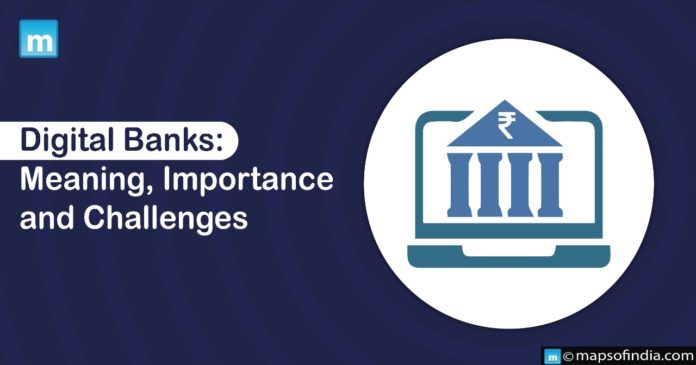National Institution for Transforming India (NITI) Aayog released a report regarding digital banks and their regulation titled “Digital banks: A proposal for licensing and regulatory regime for India”. This report recommended the administration set up digital banks in India.
Some advanced moves under the “Pradhanmantri Jan Dhan Yojana (PMJDY) as per report:
- Restriction of digital bank licences
According to the new report by NITI Aayog, there will be restrictions on various digital banks. The license will be of no use regarding the volume of customers served.
- The Reserve Bank of India (RBI)’s regulation
The Reserve bank of India has enlisted the licensee in a particular sandbox framework.
- Full-scale digital bank
A full-scale digital bank licence will be issued based on technological risk management and satisfactory performance.
- Dual approach
According to NITI Aayog, there will be a dual approach while dealing with digital banks. The first approach is to grant licences to digital business banks. Another approach will be the availability of a licence for a universal digital bank only after gaining appropriate knowledge and experience with the digital business banks.
What is a digital bank?
Digital banks are nothing but the same traditional way of banking online. All the paperwork activities or the issues people will be solved online through apps and websites.
In other words, digital banks are the digitalisation of all the banking services and their programmes. These services will include a deposit of money, withdrawal, transfer, management of accounts, payment of bills, loans etc.
The concept of digital banks is defined under the “Banking regulation act, 1949. Not only this, but Union Finance Minister Nirmala Sitharaman has announced the budget, which will also have the provision for digital banks. She also told the funding regarding 75 Digital Bank Units (DBU) in 75 districts.
Why are Digital Banks important?
There are several reasons why digital banks have been introduced. These reasons are related to the public and their day-to-day demands, which are :
1. Cost oriented
2. Reduction in banking inequality
3. Utilisation of JAM trinity
4. Access to technology
5. To overcome challenges regarding financial inclusion in the country
On the other hand, some challenges are being faced in implementing these recommendations by NITI Aayog.
Mentioned below are the challenges:
1. Lack of knowledge
Due to the targeted scheme of government for senior citizens regarding their pensions, many senior citizens walk to banks. These old-aged citizens are unknown to the technical terms and would not be able to access the internet.
Hence, it will be a challenge for these people to move ahead.
2. Cyber security
As per the regulations of NITI Aayog, there is no provision for any cyber security. Therefore, protecting digital data and third-party involvement will be a concern.
3. License :
In the process of digitalisation of banks, many government-owned, as well as private banks are involved. The Reserve Bank of India (RBI) has not issued any provision regarding the availability of licenses.
The experience of the RBI in issuing licenses to private banks has become a risky task. As in the case of Yes bank.





